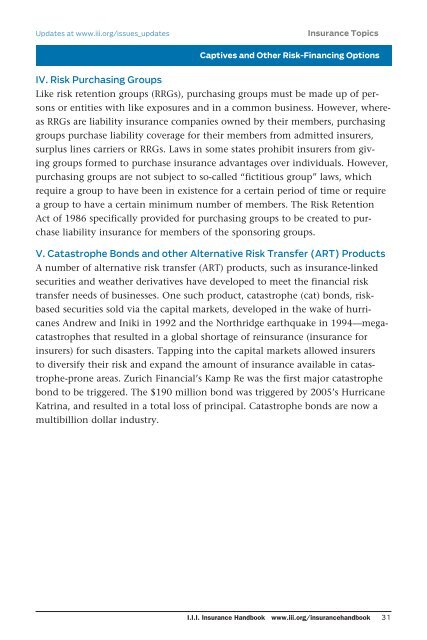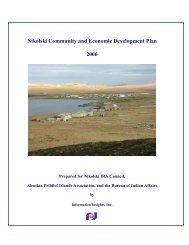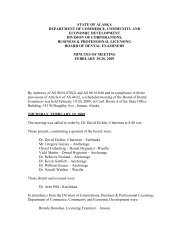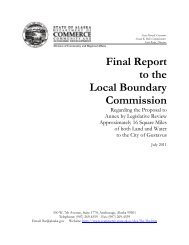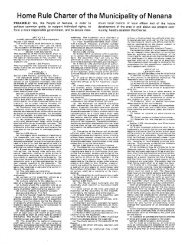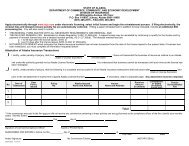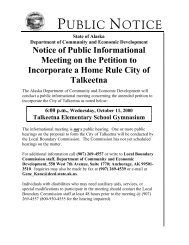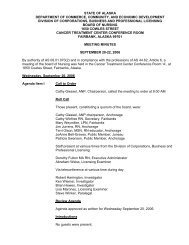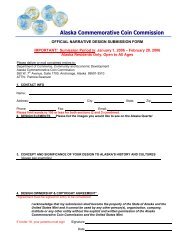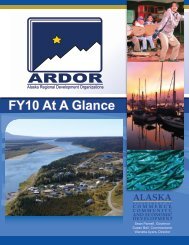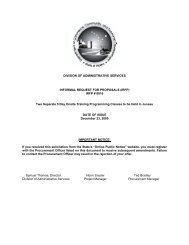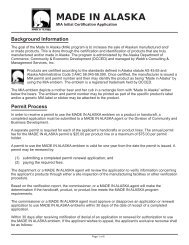Insurance Handbook - Alaska Department of Community and ...
Insurance Handbook - Alaska Department of Community and ...
Insurance Handbook - Alaska Department of Community and ...
Create successful ePaper yourself
Turn your PDF publications into a flip-book with our unique Google optimized e-Paper software.
Updates at www.iii.org/issues_updates <strong>Insurance</strong> Topics<br />
Captives <strong>and</strong> Other Risk-Financing Options<br />
IV. Risk Purchasing Groups<br />
Like risk retention groups (RRGs), purchasing groups must be made up <strong>of</strong> persons<br />
or entities with like exposures <strong>and</strong> in a common business. However, whereas<br />
RRGs are liability insurance companies owned by their members, purchasing<br />
groups purchase liability coverage for their members from admitted insurers,<br />
surplus lines carriers or RRGs. Laws in some states prohibit insurers from giving<br />
groups formed to purchase insurance advantages over individuals. However,<br />
purchasing groups are not subject to so-called “fictitious group” laws, which<br />
require a group to have been in existence for a certain period <strong>of</strong> time or require<br />
a group to have a certain minimum number <strong>of</strong> members. The Risk Retention<br />
Act <strong>of</strong> 1986 specifically provided for purchasing groups to be created to purchase<br />
liability insurance for members <strong>of</strong> the sponsoring groups.<br />
V. Catastrophe Bonds <strong>and</strong> other Alternative Risk Transfer (ART) Products<br />
A number <strong>of</strong> alternative risk transfer (ART) products, such as insurance-linked<br />
securities <strong>and</strong> weather derivatives have developed to meet the financial risk<br />
transfer needs <strong>of</strong> businesses. One such product, catastrophe (cat) bonds, riskbased<br />
securities sold via the capital markets, developed in the wake <strong>of</strong> hurricanes<br />
Andrew <strong>and</strong> Iniki in 1992 <strong>and</strong> the Northridge earthquake in 1994—megacatastrophes<br />
that resulted in a global shortage <strong>of</strong> reinsurance (insurance for<br />
insurers) for such disasters. Tapping into the capital markets allowed insurers<br />
to diversify their risk <strong>and</strong> exp<strong>and</strong> the amount <strong>of</strong> insurance available in catastrophe-prone<br />
areas. Zurich Financial’s Kamp Re was the first major catastrophe<br />
bond to be triggered. The $190 million bond was triggered by 2005’s Hurricane<br />
Katrina, <strong>and</strong> resulted in a total loss <strong>of</strong> principal. Catastrophe bonds are now a<br />
multibillion dollar industry.<br />
I.I.I. <strong>Insurance</strong> <strong>H<strong>and</strong>book</strong> www.iii.org/insuranceh<strong>and</strong>book 31


